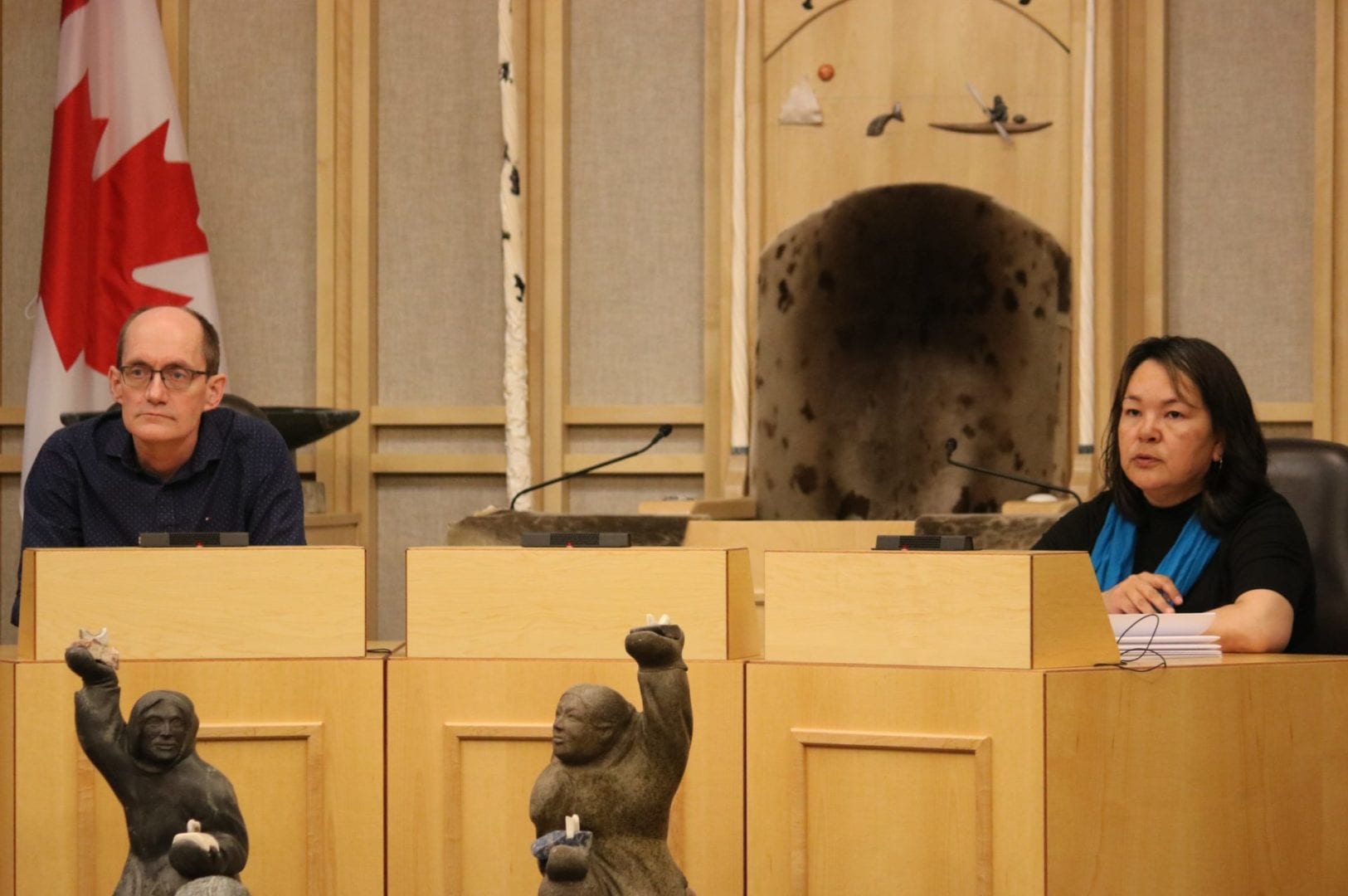
A rapid response plan has been initiated for the territory’s first Covid-19 case in Pond Inlet. The team as already been deployed and is expected to arrive in the community early Thursday afternoon, announced Dr. Michael Patterson during today’s press conference.
The team, consisting of three health-care nurses and an individual for logistics, will immediately initiate containment measures and assist with contract tracing, said Patterson.
Contact tracing has already started and around 20 people, who were in contact with the infected individual, have been swabbed in Pond Inlet. These swabs, which were collected overnight, will be analyzed in Iqaluit today, said Patterson, adding Iqaluit’s GeneXpert device can provide results within a couple of hours.
This testing capacity available in Iqaluit has been reserved for a “high risk” situation, he explained. This is a situation where “getting information quickly is obviously very important.”
These individuals identified through contact tracing will be swabbed twice. The Department of Health plans to send a second set of swabs to be tested to the public health lab in Ontario.
Depending on the flight schedule, it usually takes around six days from Pond Inlet to get test results from the south. For chartered flights, the wait time could be two to three days, informed Patterson.
“We want to ensure that we don't miss a false negative with the GeneXpert. And so until we're certain that the machine is working properly, and we know how reliable it is, we're going to continue to do both tests,” explained Patterson.
In the past, the GeneXpert device was used for testing tuberculosis.
Currently, less than ten people within Pond Inlet are under investigation for Covid-19.
At this time, the full details of how the infected individual got Covid-19 is unknown. Through contact tracing the health team is trying to determine who else has been exposed to the virus. “If through that we can't figure it out, then we will cast a wider net trying to find the source of this individual’s infection,” said Patterson.
“We will probably have a pretty exhaustive list of contacts over either today or tomorrow,” added Patterson. However, how long it will take to complete contact tracing is dependent on how much transmission has occurred, he explained.
Nunavut’s first positive test result for the Covid-19 was identified on April 29. During the press conference held at 11 a.m. today, Patterson revealed it was 12 hours ago when the positive case was detected.
The infected individual developed symptoms last week and was swabbed on April 23. Based on the information known, Patterson said the individual has been isolating at home.
Patterson consistently told reporters that he would not reveal or discuss information about the infected individual for privacy and protection reasons.
“There's some information that we're just not going to share because we don't want to contribute to blaming or shaming people. Nobody wants to catch Covid-19. Nobody wants to bring it back to their community. And we don't ... I don't want to contribute to any of that. So there are parts of this that we will not discuss,” he said.
The chief public health officer said from the onset of the pandemic it was just a matter of time before Covid-19 arrived into the territory.
“We anticipated that sooner or later the virus would be detected in the territory,” said Patterson. According to him, what is surprising is “it’s taken this long to get here.”
“Our primary focus now is to detect and contain the virus to prevent further transmission within the community and to other communities,” said Patterson.